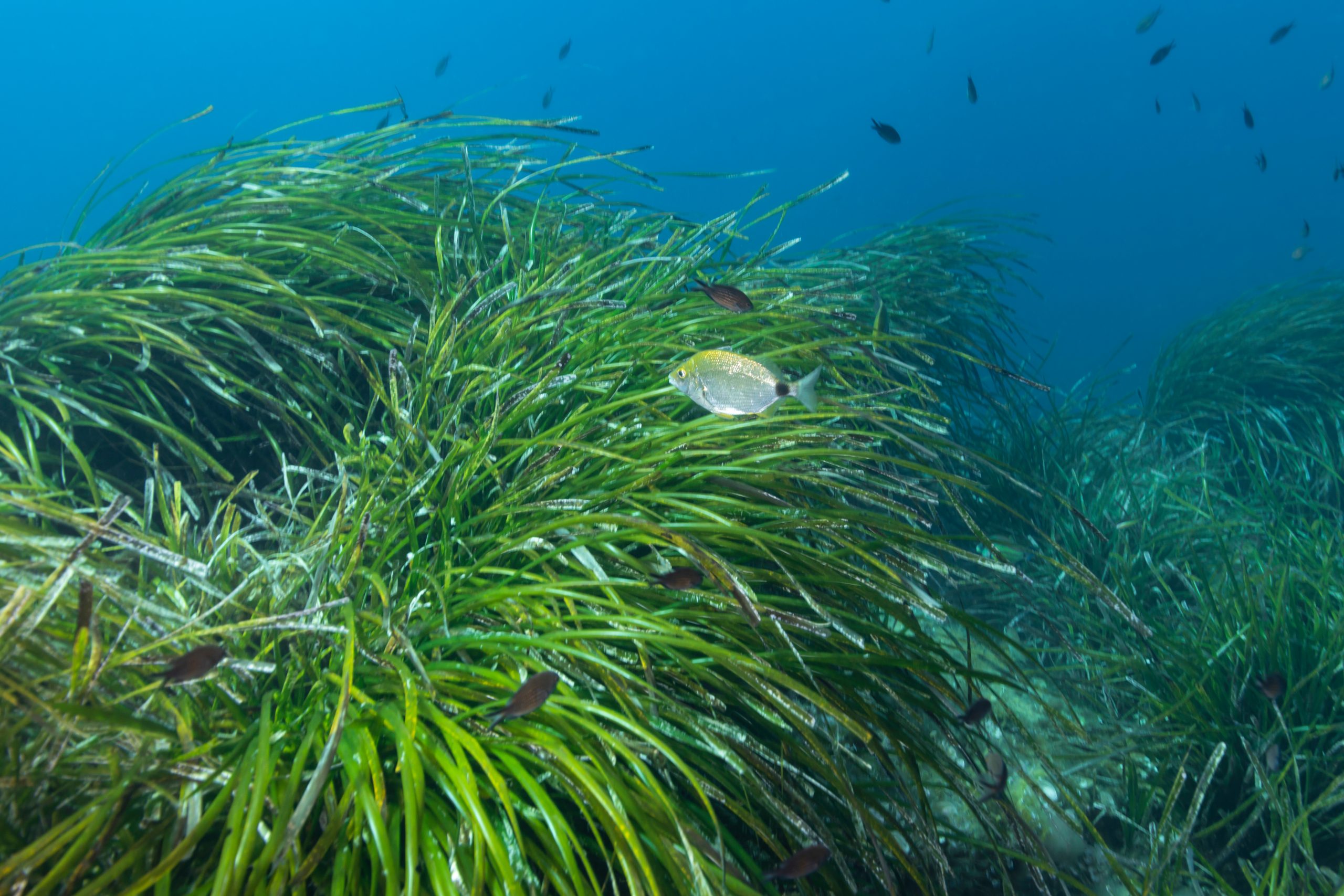News
A young researcher’s journey: exploring how we can bring seagrass up the nature restoration agenda

News | Jul 2022
Eunbyul Kim is currently studying for a masters in climate change policy at King’s College London. For the past five months, she has been working with UNEP-WCMC to help improve our data and policy background on the benefits of seagrass restoration in Europe.
Before starting my work at UNEP-WCMC helping with restoration policy research, I did not really know much about seagrasses and their role in marine ecosystems. However, as soon as I got to work investigating seagrass coverage and restoration in the Mediterranean, I soon realised there is so much more to these special little plants than meets the eye!
Seagrasses are marine flowering plants present in shallow seas of all the world’s continents, except Antarctica. There are 72 recognised species, grouped into several families. The Mediterranean Sea is currently home to 1.2 million hectares of seagrass but despite being so widespread, their exact location, extent and health are poorly understood because they live underwater, so monitoring them is challenging.
Seagrasses are of significant cultural importance, and they are often depicted in under-the-ocean paintings. However, they are unfamiliar to the great majority of the public!
Many Mediterranean marine studies have demonstrated the multiple benefits provided by seagrasses which benefit people, nature and our climate. By providing a habitat for marine life, seagrass supports food security and livelihoods, as well as supporting biodiversity, and helps to mitigate climate change through capturing and storing carbon and shoring up coastal communities.
However, these benefits are not well documented or recognised across global marine policy, and the rate of seagrass loss we are now seeing is alarming.
Disappearing meadows
Globally seagrass loss accelerated from 0.9 per cent annually in the 1940s to 7 per cent per year in the 1990s. It really surprised me to discover during my research that these plants have been disappearing at such a rapid pace without many people, including myself, knowing much about them.
Several factors are driving their decline, such as destructive fishing, rising sea temperatures, physical destruction, coastal development, poor water quality and other pollution.
Research on ecosystem restoration often focuses on terrestrial ecosystems but restoring both terrestrial and marine ecosystems are equally important for achieving global targets on climate change and sustainable development. We know seagrass plays a big role in carbon capture (it captures carbon 35 times faster than tropical rainforests), supporting wildlife and coastal communities, and it is vitally important we do more to understand seagrass benefits and manage and remove the factors leading to its loss. To help improve knowledge to support these actions, I set about a literature review on seagrass.
The natural value of seagrass
If the wider socio-economic benefits of seagrass and seagrass restoration are better acknowledged, then it’s likely that protection and restoration, as well as research, might be better funded. This is particularly important in the face of rising ocean temperatures, as seagrasses could become increasingly at risk.
A recent Italian study investigated the ecosystem service benefits of Posidonia Oceanica, a major seagrass species of the Mediterranean Sea, where it covers over 350 thousand hectares of Italian coastal zone.
Five benefits were measured by the researchers and converted into monetary values per hectare of seabed. The study found that for carbon sequestration, the seagrass saved almost 40 Euros per hectare per year, its oxygen production was the equivalent of almost 2,000 €/ha/year, erosion protection almost 9,000 €/ha/year, detoxifying benefits were over 6,000 €/ha/year and food production value was over 4,000 €/ha/year. These are very high returns on investment in seagrass conservation!
What can conservation scientists do now to help?
We need to fill gaps in our scientific understanding of seagrass benefits and drivers of loss, as well as opportunities for effective protection and restoration. To increase the evidence base for seagrass conservation, increased funding and monitoring is crucial.
However, seagrass monitoring it is not easy! Alongside on-the-ground efforts involving conservation projects and local communities, remote sensing is emerging as an important new tool, with satellite imaging and aerial drones being used to map seagrass. But maps are often inaccurate and not updated sufficiently frequently. Tracking the trends in seagrass more effectively will be an important contribution for effectively seagrass restoration and conservation actions.
There is therefore a real need to boost capacity to monitor seagrass remotely and make use of new technologies to do so accurately and at scale, and researchers have been calling for improvements here for more than a decade.
How the drive for global restoration will support seagrass
While there are practical challenges to safeguarding seagrass, there are also increasing high-level efforts to protect and restore marine environments.
The UN Decade on Ecosystem Restoration aims to accelerate ecosystem restoration action globally and across all ecosystems. Restoration of marine habitats is a key element within the Decade, including seagrass meadows. The UN Decade of Ocean Science for Sustainable Development is another concurrent global campaign for action, with vital outcomes including “A healthy and resilient ocean where marine ecosystems are understood, protected, restored and managed”.
The links between these global campaigns and seagrass restoration are two-way and mutually reinforcing. Working towards these major global outcomes should improve scientific knowledge, funding and protection for seagrass, while boosting seagrass protection and restoration will lead to healthier oceans and a more sustainable planet.
Have a query?
Contact us
communications@unep-wcmc.org
